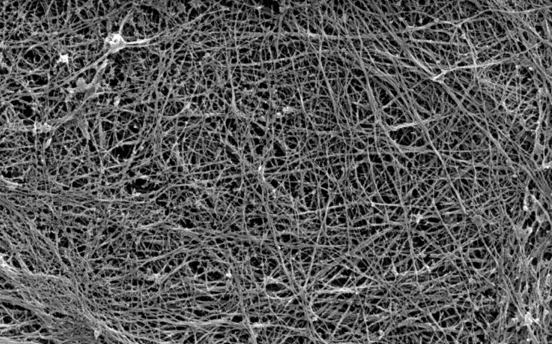CELLvo™ Matrix Plus: Shaping the Future of In Vitro Cardiomyocyte Culture
Human Induced Pluripotent Stem Cell-Derived Cardiomyocytes (hiPSC-CMs) possess outstanding potential for use in cardiotoxicity assays as part of pre-clinical drug discovery. Specifically, these cardiomyocytes can be utilized to detect drug-induced proarrhythmia, thereby enabling scientists and medical professionals to evaluate the risk of heart rhythm disturbances from various drugs under development. The Comprehensive In Vitro Proarrhythmia Assay (CiPA) initiative was created by the FDA and the drug discovery field to build on this finding.
Unfortunately, despite this promising news, progress on the use of hiPSC-CMs in cardiac safety screening has been relatively slow. The reason for this slow progress lies in the maturity of cells traditionally utilized in these assays; nearly all possess immature phenotypes, which greatly diminishes their disease modeling potential. Mature hiPSC-CM phenotypes are needed in high-throughput screening (HTS) assays to successfully support early-stage drug cardiotoxicity research.
To address the issue, the scientists at StemBioSys have spent several years working closely with Dr. Todd Herron, President & CEO of Cartox (a subsidiary of StemBioSys) and Director of the Cardiovascular Regeneration Core Laboratory in the Frankel Cardiovascular Center at the University of Michigan. The team has focused on testing the hypothesis that a human perinatal stem cell derived extracellular matrix (ECM) encourages greater hiPSC-CM maturity - and that these mature cells can be utilized to drive major improvements in mitigating drug-induced cardiac toxicity.
The team conducted all of their testing using commercially available, cryopreserved cardiomyocytes. These cells are optimal because they provide a standardized product, are convenient to use and have been validated by FDA-led studies.
As part of their testing protocol, the team took a vial of cryopreserved cells and divided them into three different experimental groups: Matrigel (a mouse derived ECM used routinely in Dr. Herron’s Cardiovascular Core Laboratory), StemBioSys’ CELLvo™ Matrix and CELLvo™ Matrix Plus, both of which are derived from human cells. The experiments involved both morphological and functional studies, with noteworthy results.
Structural: Microscopy
Examined in a large field of view one week after thawing cells from liquid nitrogen cryostorage, the cells in the Matrigel matrix displayed an isotropic pattern - that is, circular and random shapes, without any alignment or directionality. Cells plated in the CELLvo™ Matrix displayed a similar morphology to the Matrigel cells.
In the CELLvo™ Matrix Plus matrix, however, the team quickly observed profound differences in cell morphology. Cells in this matrix displayed a more anisotropic pattern; nearly 100% of them were much longer and more rod-shaped than the Matrigel and CELLvo™ Matrix cells, which displayed a more radial orientation. Additional studies confirmed that the cardiomyocytes cultured on Matrix Plus displayed uniformly organized and beautifully aligned sarcomeres in a striated pattern, creating bundles similar to those seen in adult cardiomyocytes in vivo.
Crucially, Matrix Plus cells were also often binucleated and appeared to promote a greater, more uniform expression of cardiac troponin I - both important hallmarks of cardiac maturation.
Functional: Electrophysiology, Drug Screening and Mitochondrial Functionality
As part of an electrophysiology assay for each of the three different matrices, the team used voltage sensitive dye to visualize spontaneous action potentials. Next, they performed drug testing on the cells using a hERG ion channel blocker (hERG ion channels are commonly used as positive controls of cardiotoxicity). The Matrigel and CELLvo™ Matrix samples displayed some elongation of action potential durations, which could signal a potential arrhythmia. But the Matrix Plus clearly demonstrated the occurrence of Torsades de Pointes (TdP) arrhythmia - a fatal arrhythmia that can be induced by drugs. This is a critical discovery that could aid in determining the possibility of fatal cardiac response in certain medications.
Further drug screening involved observing signs of arrhythmia in six different drug compounds that have been determined as high-risk for cardiac response. The team added these medications at their highest dose to wells within the three different matrices and observed the results. The Matrix Plus wells indicated an arrhythmic response for all six different drugs, whereas the Matrigel didn’t detect an occurrence of arrhythmia in nearly as many - a clear sign that Matrix Plus offers much higher sensitivity versus standard substrates. (This sensitivity is highly specific as well; studies conducted using low-risk compounds did not yield arrhythmic results.)
Lastly, the team performed tests to examine the distribution and function of mitochondria - the energy suppliers within the heart - by using a fluorescent dye to track the presence of mitochondria within cell cultures on all three matrices. The signal was much brighter and more widely distributed in Matrix Plus cells than in the other two matrices, signifying a high level of mitochondrial functionality (comparable, in fact, to adult ventricular cardiomyocytes).
These findings mark an exciting new chapter in cardiotoxicity screening. By providing a human-derived ECM with a straightforward cultivation method that can grow mature hiPSC-CMs in only seven days, StemBioSys delivers a convenient, affordable and accessible tool in the effort to advance and improve cardiac safety in medication.
Located in San Antonio, TX, StemBioSys develops cell culture technologies licensed from The University of Texas Health Science Center, San Antonio. Our work represents the next evolution in stem cell research. For more information about StemBioSys and our patented technology, please contact us.

